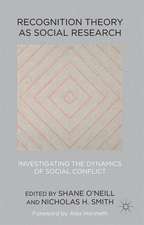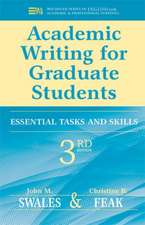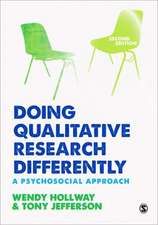Hard-to-Survey Populations
Editat de Roger Tourangeau, Brad Edwards, Timothy P. Johnson, Kirk M. Wolter, Nancy Batesen Limba Engleză Paperback – 27 aug 2014
| Toate formatele și edițiile | Preț | Express |
|---|---|---|
| Paperback (1) | 494.72 lei 3-5 săpt. | |
| Cambridge University Press – 27 aug 2014 | 494.72 lei 3-5 săpt. | |
| Hardback (1) | 818.83 lei 6-8 săpt. | |
| Cambridge University Press – 27 aug 2014 | 818.83 lei 6-8 săpt. |
Preț: 494.72 lei
Nou
Puncte Express: 742
Preț estimativ în valută:
94.67€ • 98.24$ • 79.13£
94.67€ • 98.24$ • 79.13£
Carte disponibilă
Livrare economică 24 februarie-10 martie
Preluare comenzi: 021 569.72.76
Specificații
ISBN-13: 9781107628717
ISBN-10: 1107628717
Pagini: 669
Ilustrații: 29 b/w illus. 1 map 54 tables
Dimensiuni: 174 x 249 x 30 mm
Greutate: 1.34 kg
Ediția:New.
Editura: Cambridge University Press
Colecția Cambridge University Press
Locul publicării:New York, United States
ISBN-10: 1107628717
Pagini: 669
Ilustrații: 29 b/w illus. 1 map 54 tables
Dimensiuni: 174 x 249 x 30 mm
Greutate: 1.34 kg
Ediția:New.
Editura: Cambridge University Press
Colecția Cambridge University Press
Locul publicării:New York, United States
Cuprins
Part I. Introduction: 1. Defining hard-to-survey populations; 2. Hard-to-survey populations in comparative perspective; 3. Measuring undercounts for hard-to-survey groups; 4. Counting and estimating hard-to-survey populations in the 2011 Census; 5. A review of quality issues associated with studying hard-to-survey populations; Part II. Conducting Surveys in Difficult Settings: 6. Disaster research: surveying displaced populations; 7. Conducting surveys in areas of armed conflict; 8. Interviewing in disaster-affected areas: lessons learned from post-Katrina surveys of New Orleans residents; 9. Reaching and enumerating homeless populations; 10. 'Where are our costumes?': The All Ireland Traveller Health Study - our Geels 2007–11; Part III. Conducting Surveys with Special Populations: 11. Representing the populations: what general social surveys can learn from surveys among specific groups; 12. Surveying cultural and linguistic minorities; 13. Challenges to surveying immigrants; 14. Ethnographic evaluations on coverage of hard-to-count minorities in US decennial censuses; 15. Methodological and ethical issues arising in carrying out research with children and young people; 16. Challenges in the first ever national survey of people with intellectual disabilities; 17. Conducting research on vulnerable and stigmatized populations; 18. Surveying political extremists; Part IV. Sampling Strategies for the Hard to Survey: 19. Probability sampling methods for hard-to-sample populations; 20. Recent developments of sampling hard-to-survey populations: an assessment; 21. Indirect sampling for hard-to-reach populations; 22. Sampling the Māori population using proxy screening, the Electoral Roll, and disproportionate sampling in the New Zealand Health Survey; 23. Network-based methods for accessing hard-to-survey populations using standard surveys; 24. Link-tracing and respondent-driven sampling; Part V. Data Collection Strategies for the Hard to Survey: 25. Use of paid media to encourage 2010 Census participation among the hard to count; 26. The hard to reach among the poor in Europe: lessons from Eurostat's EU-SILC survey in Belgium; 27. Tailored and targeted designs for hard-to-survey populations; 28. Standardization and meaning in the survey of linguistically diversified populations: insights from the ethnographic observation of linguistic minorities in 2010 Census interviews; 29. Mobilizing hard-to-survey populations to participate fully in censuses and surveys; 30. Finding the hard to reach and keeping them engaged in research.
Recenzii
'The challenge of doing research with rare and difficult to find populations is shared across all sectors of the research industry. This book offers the first comprehensive treatment of methods specifically designed to meet that challenge.' Reg Baker, Senior Consultant, Market Strategies International
'Hard- to-Survey Populations fills a key gap in the survey methods literature. It will be relied upon by both novices and experts.' Stanley Presser, Distinguished University Professor, University of Maryland
'Hard- to-Survey Populations fills a key gap in the survey methods literature. It will be relied upon by both novices and experts.' Stanley Presser, Distinguished University Professor, University of Maryland
Descriere
Examines the different populations and settings that can make surveys hard to conduct and discusses methods to meet these challenges.
















